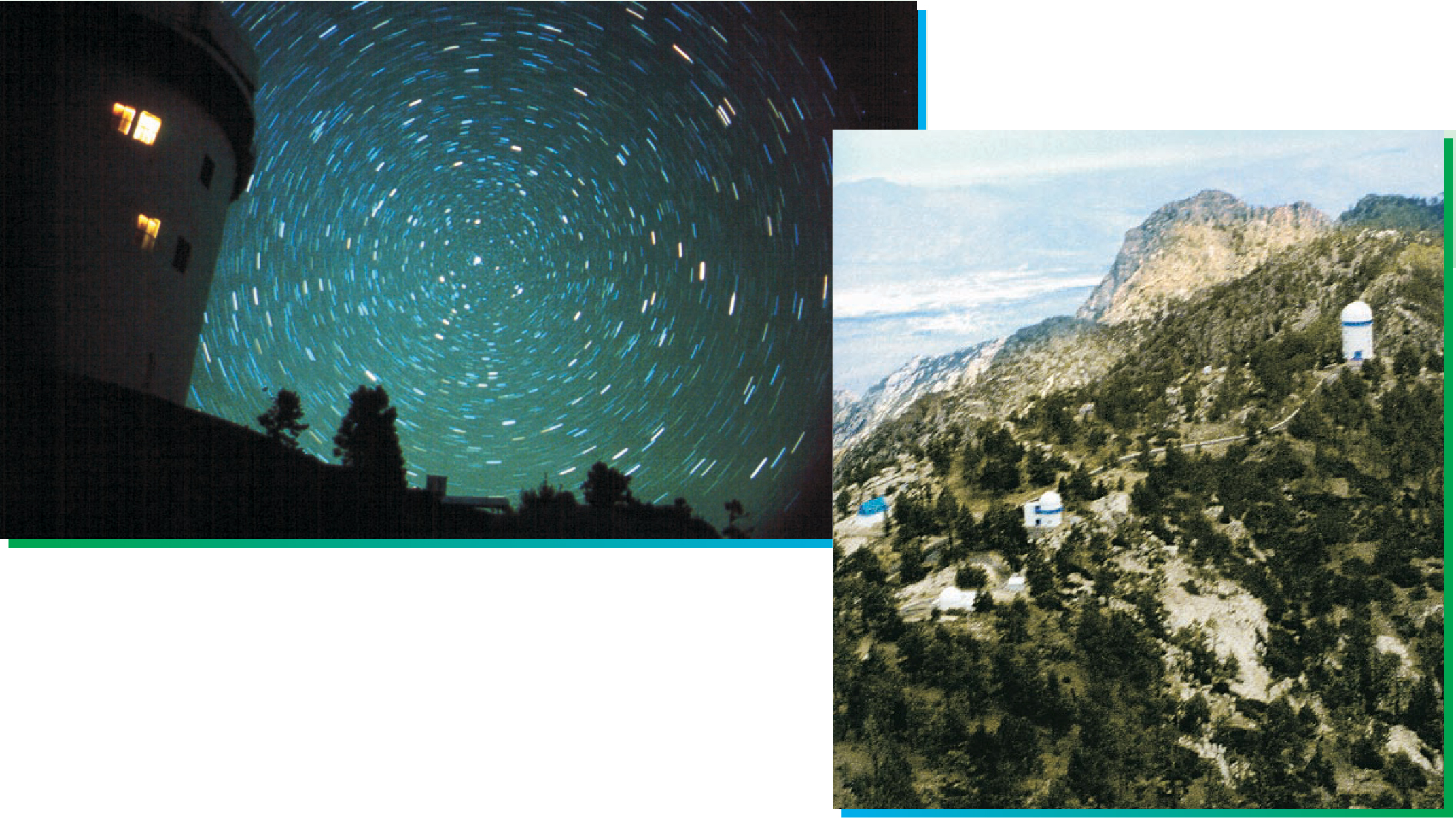Baja Site Vies to Host Telescopes
DOI: 10.1063/1.1650219
The growing name recognition of San Pedro Mártir is both evidence of, and a catalyst for, astronomers in Mexico and the US eyeing the Baja California site as a possible new hot spot for ground-based telescopes.
The site has been home to Mexico’s national observatory since the 1970s. The largest and newest of its three telescopes is 2.1 meters in diameter and has been in use for more than two decades. But over the past couple of years, momentum has been mounting to develop the 2800-meter-high site, which is located about 300 kilometers southeast of San Diego, midway between the Pacific Ocean and the Gulf of California. San Pedro Mártir, proponents say, could rival any existing telescope site.
Turning San Pedro Mártir into a world-class astronomy site got a boost early this year when two groups in Mexico merged their previously competing plans for large optical telescopes. Astronomers at the Institute of Astronomy, Optics, and Electronics in Puebla bring to the table an agreement with the University of Arizona’s Steward Observatory to cast an 8-meter-class mirror, while the Institute of Astronomy at the National Autonomous University of Mexico (UNAM) runs the observatory at San Pedro Mártir. Now the project leaders are seeking additional partners and deciding whether to build a single-mirror or binocular telescope.
Another boost came from outside Mexico. With several large projects in the works in the US, astronomers “are taking a fresh look at where would be the optimum place to site a facility,” says the National Optical Astronomy Observatory’s Alistair Walker, cochair of the site selection committee for the Thirty Meter Telescope (see Physics Today August 2003, page 22
The fresh look includes an analysis of cloud cover and water vapor from about five years of satellite data. André Erasmus, a consulting meteorologist based at the South African Astronomical Observatory in Cape Town, compared 15 sites in North and South America for the TMT team. In terms of cloud cover, San Pedro Mártir, with cloud-free nighttime hours 73% of the time, is “superior to other existing sites in North America, and comparable to sites elsewhere,” Erasmus says. “But if you were focusing on infrared astronomy, it’s not the site you would pick—it’s not high enough and dry enough.” The site is excellent for infrared observations roughly 10% of the time, he says. Overall, the competition is stiff, adds Caltech’s George Djorgovski, cochair of the TMT site selection committee. He ticks off Mauna Kea in Hawaii, the Canary Islands off the coast of Spain, various sites in Chile, and perhaps other, undeveloped sites as being as good as or better than San Pedro Mártir.
As might be expected, Mexican astronomers are less cautious in their endorsement of San Pedro Mártir. “It appears to be one of the best places in the world to do astronomy—and the best in the Northern Hemisphere,” says Remy Avila of UNAM’s Morelia campus. “It’s the quality of the site that is pushing astronomers to go there, and it is not far from the US.” Avila measures atmospheric turbulence to aid in the design of adaptive optics and says that he documented nine consecutive nights with very low turbulence at high altitudes at San Pedro Mártir. “I thought that was good, but I didn’t realize how good, how unusual it was, until I talked to colleagues around the world.” But, Avila notes, long-term comparisons of high-altitude turbulence at various sites have not yet been made.
Weighing intangibles
Surface winds, geologic stability, and light pollution also figure into siting a telescope. And after scientific and technical parameters have been considered, the final site decision factors in “intangibles,” says Djorgovski. They include politics, road access, added costs of building at higher altitudes, and so on. For example, purely on the basis of clear skies and good seeing, California has sites as good as or better than San Pedro Mártir, Djorgovski says. “But they are all politically unattainable because they are in national forests or national parks. It would be a nightmare [to get the necessary permits].”
Moving to Mexico could skirt the opposition from environmentalists and native groups that increasingly beleaguers new projects in the US—examples include the controversy over protecting red squirrels on Mt. Graham, Arizona; the revoked permit that this past spring sent VERITAS, a cosmic-ray detector, scrambling to find a new home; and the stalled Keck outriggers on Mauna Kea. “In all of America, building more telescopes is almost prohibited by environmental activists,” says Roger Angel, an astronomer at the University of Arizona in Tucson. “It’s very sad.”
Meanwhile, Mexico continues its campaign to attract telescopes to San Pedro Mártir. Two years ago, the government designated the site and its surroundings a national park to protect against future light pollution. “This good site has to be a trigger to develop better astronomy here [in Mexico], and better science generally,” says José Franco, director of UNAM’s Institute of Astronomy. “I’d like to move as fast as possible. In 10 years, I’d love to have a first-class international observatory.”

Clear skies at San Pedro Mártir might make the Baja California site competitive for state-of-the-art astronomy.
JESÚS GALINDO/SILVIA TORRES

More about the Authors
Toni Feder. tfeder@aip.org
